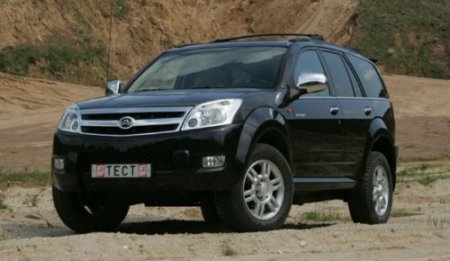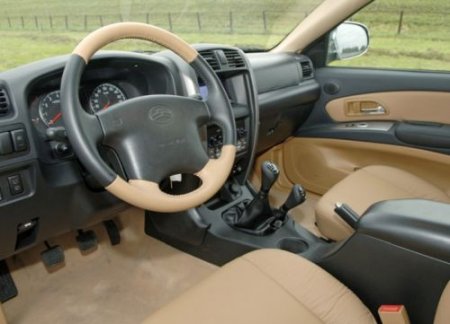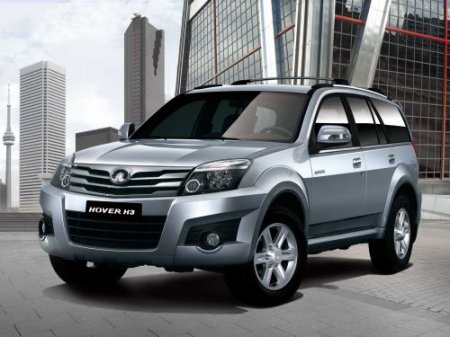
Great Wall Hover in detail about fuel consumption
Content
Each car has its own technical characteristics, which include fuel costs over a certain distance. In this case, we will consider the fuel consumption of a Hover per 100 km.

A bit from the history of creation
At present, it is difficult to even imagine that once people did without cars. Now their choice is huge, for every taste. They have different reviews. It's hard not to get lost in the choice. But, before you buy an “iron horse”, you should always not only pay attention to its appearance, but also carefully study the technical characteristics, in particular, find out what fuel consumption the car has, how long it takes to accelerate.
| Engine | Consumption (track) | Consumption (city) | Consumption (mixed cycle) |
| 2.4 | Xnumx l / xnumx km | 12 l / 100 km | 11 l / 100 km |
2.8CRDi | 7.6 l / 100 km | 8.9 l / 100 km | 8.5 l / 100 km |
Europe, America, Asia - where only modern cars are not produced. But, now I want to pay attention to the Hover Great Wall - a crossover of Chinese origin, five-seater, but compact, with 5 doors. The car was presented to the court of motorists in 2005 and has since gone through two restylings. In 2010 and 2014, the Hover Great Wall changed its technical equipment and exterior.
Hover frame design. It can be equipped with either a 2 or 2,4 liter petrol engine or a 2,8 liter diesel. Gearbox - mechanical. Each of the engines complies with Euro 4 standards. The Hover fuel tank has a capacity of 74 liters.
Machine brand designations
The SUV is manufactured by Great Wall Motors, and its assembly takes place both in China itself and in Russia. You can find the following vehicle designations:
- Great wall haval h3
- Great Wall Hover CUV
- Great Wall H3
- Great Wall Hafu
- Great Wall X240
Complete set with engines
Cars can be equipped with engines:
- 2,4L 4G64 l4
- 2,0L l4
- 2,8 L GW2.8TC l4
How much fuel does the car consume
It is difficult to answer this question unambiguously and immediately. There are norms indicated in the technical passport for the car, and there are certain motorists themselves. This concept is relative and even the same car model can show different data. If the difference is small, no problem. This may depend on the driver's driving style, on traffic congestion, on whether the car travels around the city or on the highway, is in traffic jams, or stops only when the color of the traffic light changes.
Having a multi-point injection, the Hover engine provides good speed performance (170 km / h) and at the same time its fuel consumption is only 8,9 liters per 100 km. At this speed, the car can accelerate in just 11 seconds. For fans of a car with a diesel engine, there is a turbodiesel version of the Hover SUV.
Depending on the car model and brand of fuel, according to the actual data of SUV owners, gasoline consumption for a Hover in the city can range from 8,1 to 14 liters. Fuel consumption at the Hover on the highway is from 7,2 liters to 10,2. With a mixed cycle - 7,8 - 11,8 liters. That is, it will be the real fuel consumption of the Great Wall Hover.

Hover 2011
The 2011 Great Wall Hover's gas mileage is:
in the city - 13 l / 100 km;
on the highway - 7,5 l / 100 km;
mixed type of driving - 10 l / 100 km.
Hover 2008
Average fuel consumption of the 2008 Great Wall Hover may vary due to operating conditions. So, in winter, it can be 11 liters per 100 km. In densely populated areas - 11,5 - 12 liters. For Hover cars with high mileage - 11 liters. If the car is with a trailer, then 2 liters should be added to the gasoline engine for every 100 km of run, and 1,3 liters to the diesel engine.
Things are much worse if the fuel consumption differs significantly from that specified in the technical specifications. In this case, it is better to drive the iron horse to the service station to check and troubleshoot the Hover.
What should be done to reduce fuel consumption
If the fuel consumption of the Great Wall Hover has increased significantly, you should:
- to clean the catalyst;
- inspect the SUV for wheel torsion;
- replace spark plugs.
If no malfunctions have been identified, it may be a matter of the track or driving technique. You can also analyze them. Although, in part, both the power of the Hover engine and the severity of the car itself play a role here.
Why does fuel consumption increase?
Experts have noticed that fuel consumption on Wall Hover can increase for a number of reasons, including:
- Late ignition. This point is worth watching closely.
- Incorrectly set spark plug gaps in new cars and shortening of old ones also affect the amount of fuel purchased, which can increase up to 10%.
- The temperature of the antifreeze is not correct. In fact, few people know about this, but professionals take into account such a moment.
- As it turns out, a cold engine consumes about 20% more fuel than when it is ready for work.
- The worn crank mechanism of the Hover is again + 10% to the consumption. The same applies to the clutch.

What else can be done to fix the fuel problem
To reduce costs a little, do the following::
- If you have recently been to a service station, inspect the wheel hubs, perhaps the bearings were overtightened there. And this is an additional 15%.
- Wheel alignment depends on the length of the trip. Too large distances negatively affect it, therefore, adjust this parameter and do not forget to repeat this periodically.
- Check tires. It may seem a little ridiculous, but low tire pressure is also one of the reasons.
- On long trips, take only what you need. After all, for every additional 100 kg of cargo, you need to add an extra 10% of fuel.
- Pay attention to the nature of the ride, which includes sudden braking, slipping.
- Well, if the fuel pump or carburetor is faulty, the cost of gasoline at the Great Wall Hover for 100 km can immediately increase up to 50%.
- The quality of gasoline, as well as its brand, also play a role. As well as bad weather and a track with a small coefficient of adhesion.
- If you put all the problems together, it turns out that the engine of an SUV for 100 km can burn up to 20 liters.

